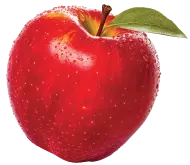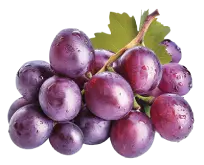
As we started 2020, immune health was on many of the lists of food trends to watch for this year, nestled among snacking, sustainability and mood foods. You could call it a consumer flirtation—one of those trends flirted with by people but without a real commitment. Then COVID-19 hit and that relationship turned into a full-fledged romance. Interest in immune health suddenly skyrocketed, as people began to embrace immune-enhancing products to ward off the pandemic or at least to improve their chances. Evidence of this was seen in Google Trends data reported in Forbes, where searches for the combined terms “immune system” and “food” spiked a massive 670% between February and March of this year.
The onset of the pandemic also drove people to stock up on immune-enhancing supplements (vitamin D, probiotics, zinc, elderberry, etc.) and functional food and beverages either fortified or naturally-containing these substances (yogurt, kefir, kombucha, matcha, etc.) The Hartman Group reports nearly a third of people are consuming functional products daily, due to the pandemic.
Mintel also reported growth in new product introductions making an immunity claim, with introductions through September 2020 almost at the same level as all of 2019.
“Consumers are looking for ways to support their immune systems as they are extremely conscious of ways to avoid getting sick—whether it’s with COVID-19 or something else,” Rigo Viezca, global head of fast-moving consumer goods solutions at Signals Analytics, told Food Engineering magazine last month. “For that reason, there has also been an uptick in popularity of beverages with immunity advantages.”
Consumer interest in immune health has been growing over the past few years. It really started to gain traction with the efforts of the yogurt industry to educate consumers about digestive health – which has been linked to immune strength – and has grown from there. Whereas a decade ago or so, Americans were squeamish about discussing gut health and that reluctance is long gone. Now more and more of us are making the diet/health connection. There is a greater realization that we are what we eat. The IFIC 2020 Food & Health survey, which was fielded in late March, showed that not only do about a quarter of us look to our food and beverages for health benefits – 40% of us specifically seek immune function from what we eat.
As I mentioned, the onset of COVID-19 led to the current consumer focus on immune enhancement, but other factors have been setting the stage.
- Study of the human microbiome
- Looking at our microbiota offers insight into the gut-brain axis. Gut health influences our overall well-being, immune health – but also sleep, mood, and other areas. Mintel’s latest Digestive Health report (published August 2020) shows that consumers attribute some of their digestive issues to stress, lack of sleep, lack of activity, and a change in their diet.
- Health & wellness trend
- Ever-rising health care costs have people being proactive about maintaining their health, so they can avoid doctors’ visits.
- Nutrition research
- Exploring the mechanisms and benefits of phytochemicals, antioxidants, vitamins, minerals…the list goes on and on.
If you want to read more about some immune-enhancing ingredients and the science behind them, read our latest R&D blog, Building Immunity Through Ingredient Choices.
The immune health opportunity
Numerous research studies show changes in consumer eating behaviors due to the pandemic. Most significantly, people are cooking and eating more at home now than they were pre-pandemic. (And from all indications, this behavior is poised to continue.) At the same time, they’re buying more functional foods and foods with immune-enhancing benefits to eat at home. This has created an opportunity for food manufacturers to offer more products that deliver immune benefits.
Remember taste
In Mintel’s report, Consumer Approach to Nutrition, US, January 2020, they asked consumers about their approach to nutrition in food and drink and revealed that taste is still number one.
| Taste | 74% |
| Affordability | 55% |
| Overall nutritional value | 42% |
| Convenient to prepare | 40% |
| Natural ingredients (eg no artificial colors) | 39% |
| Seasonality (eg produce in season, holiday theme/flavors) | 29% |
| Appeals to preferences of others (eg kids, partner) | 24% |
| Follows doctor recommendations/health guidelines (eg low-sodium, high fiber) | 21% |
| Meets needs of a special diet (eg keto, vegan) | 17% |
| Sustainable ingredient sourcing (eg Fair Trade produce) | 13% |
Source: Consumer Approach to Nutrition, US, January 2020
This reinforces that food and beverages must taste good even when they deliver functional benefits. Fruit and fruit ingredients add functional benefits, without having to overcome off or stringent flavors other ingredients possess.
Find your white space
If you’re interested in hearing more about the expanding opportunity in immune-enhancing food and beverages, what new products are hitting store shelves and what ingredients offer immune-enhancing benefits, Join us as we explore trends and consumer perceptions of the wide range of ingredients that can help strengthen or boost immunity, including probiotics, antioxidants, and herbals.
Thursday, November 12th / 12:00 PST
Sign up for FREE Webinar: “IMMUNE-BOOSTING FOOD AND DRINK THAT CONSUMERS WANT”




